After about a year of operation I wanted to make some improvements to my Big Aquaponics system. I decided I wanted to do Constant Height In Fish Tank, Pump In Sump Tank (CHIFT PIST) operation. I had been dealing with the need to clean my pump trap quite often and that didn’t line up with my “easy operation” methods I wanted to develop. So, the upgrade begins. A new big fish tank with a constant water level and an overflow out to the grow beds which would drain into the in ground tank where the pump would get to suck up basically clean water and avoid the whole by-weekly pump trap cleanings.
This new tank was built by connecting a couple cattle panels together to make a six foot diameter circle and then lining it with pond liner. There is a layer of tarp on the outside next to the wire and a layer of 1/4″ blue board between the tarp and the liner to give a little extra stiffness and insulation.
Folding the liner in and securing the liner around the top edge is probably the weakest point about this tank design. The folds in the tank provide a place where gunk can build up and it might be better to purchase a fitted tank liner that is made for the purpose. Unfortunately, those would be made of vinyl liner and I’m not sure how I feel about using flexible vinyl liners in this sort of situation even though you can get ones graded for potable water. I personally prefer the EPDM pond liner for aquaponic purposes because it is very durable.
It is possible that small fish in such a tank might be hidden in the folds and a dead fish floating in such a fold might not be found before it caused problems.
This tank has worked very well in the aquaponics system for a year and a half and I would do it this way again.

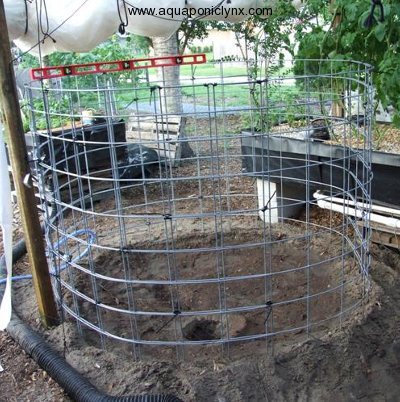
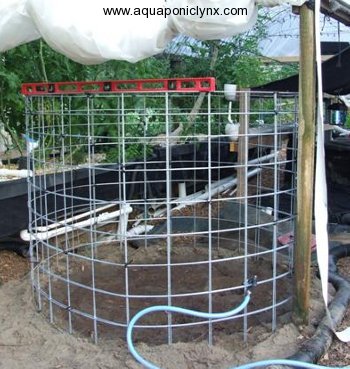

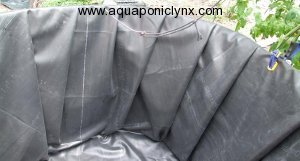
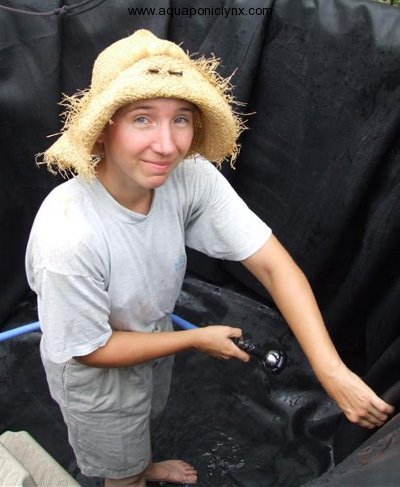
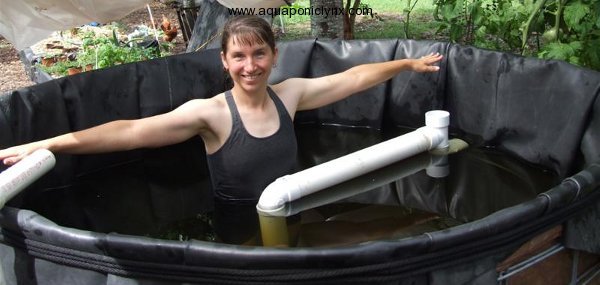
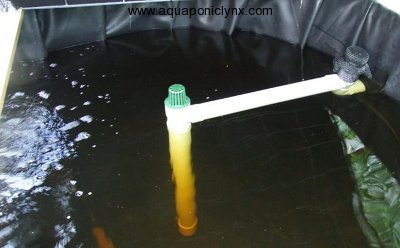
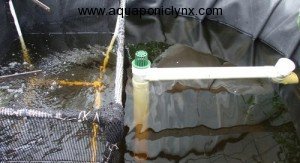
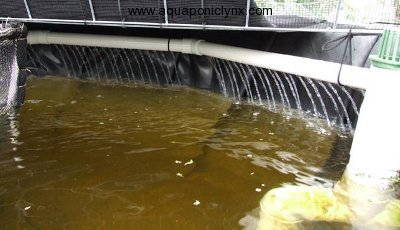
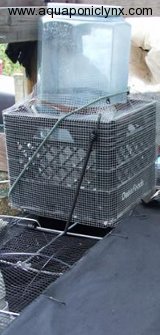


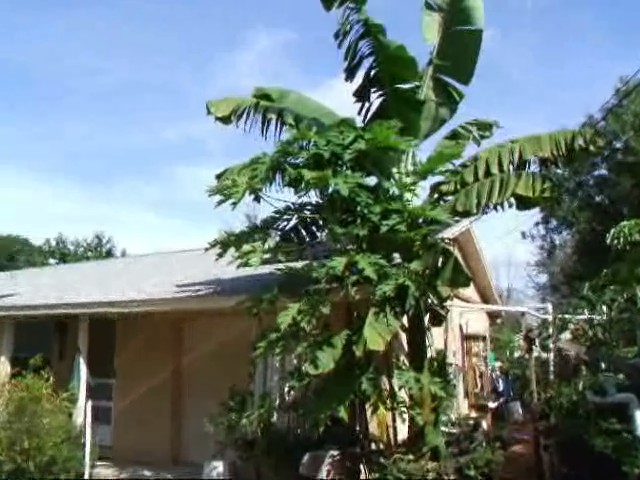
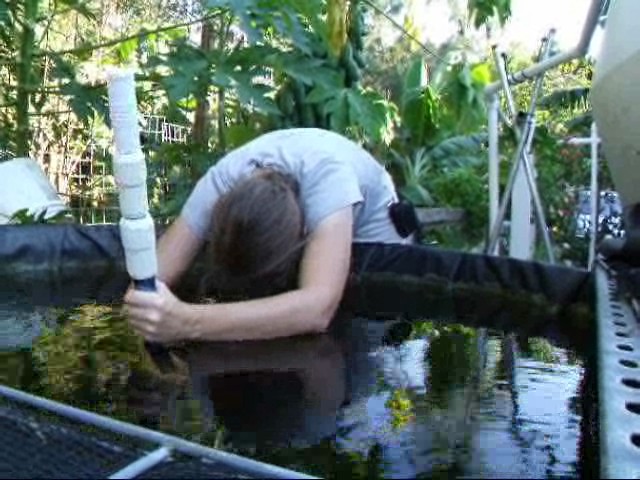
buy the red sea max 250 a very nice aquarium to have your kids learn about ocean life right in your home.
Hi TC,
I know this doesn’t necessarily apply to your CHIFT PIST system because of the indexing valve, but with a typical constant height system, wouldn’t the sump have to be the same volume as the total grow bed volume, to prevent a potential overflow of the sump?
Thanks for the feedback….Jeff
Well almost Jeff,
The sump tank for a “normal” CHIFT PIST system would need to be big enough to hold all the water needed to flood all the grow beds at once plus a little extra so the pump doesn’t run dry. It has been estimated that it takes 40% of the volume of a grow bed to flood it. I always call it 50% when figuring out sump tank sizes and an extra 10% is probably good to add to give some depth for the pump and perhaps a top up valve. In a 2:1 grow bed to fish tank system, often times the sump tank will be the same size as the fish tank.
With an indexing valve the sump tank can be much smaller and the new CHOP 2 layout for a system lends itself to running an indexing valve without the issues of low pressure control valves.
Thanks TC,
That is very helpful information. One more question based on your reply…please;)
I thought the CHOP 2 design utilized constant flow pumping, and I think I read that the function of low pressure valve is to interrupt the flow to the indexing valve to trigger its operation. What am I missing?
Thanks again for your valuable feedback…Jeff
The main thing about a chop 2 is that everything drains into the sump tank and you could have a single pump running on a timer or constant flow depending on if you are using siphons or timed flood and drain. CHOP is where the fish tank drains into the grow beds and they drain to the sump tank. CHOP 2 is where it all drains to the sump and is pumped back to both the fish tank and the grow beds.
If you were to do chop 2 with a pump on a timer feeding an indexing valve, you would need a slightly more powerful pump to provide flow to the fish tank and the indexing valve but it could work. Since the pump will be running more often when working with an indexing valve this can work.
Other option would be to CHMP constant height multiple pumps. Have one pump feeding the fish tank constantly and it drains back to the sump while another pump operates on a timer feeding the indexing valve and the grow beds to allow for a smaller sump tank.
Or (forgive me my acronyms) a CHOPOFF which would be Constant Height, One Pump, Overflow to FLOUT Feeder. The one pump pumps from the sump up to a tall fish tank like this mesh/liner success story. It can be a smaller pump as we will see.
A Solids Lifting Overflow in the side of the fish tank needs to be a good height above the growbed inlet, it’s flowing into a “sidecar” tank with a installed running right into an indexing valve. And the valve goes out to the growbeds which constant-drain into the sump.
The sidecar could be a 75-gallon stock tank on a stand, almost even with the top of the fish tank. You’ll get what, 60 gallons at each shot? Is that enough to fill a 100 gallon RMST?
(Someone theorized about putting the FLOUT right in the fish tank too, your water level would go up and down and you’d want to keep fish from going into the floaty box of course, but that’d eliminate a whole tank.)
Seems like a would be a reliable periodic trigger for an indexer. And no water flow is too slow to kick it off.
Mangled the HTML on that. Should be
…it’s flowing into a “sidecar” tank with a FLOUT installed running…
and
Seems like a FLOUT would be a reliable periodic trigger…
if I built this one right anyway. Oopsie.
could this construction method translate to the creation of termite free growbeds?
Perhaps. If you are ok with round grow beds the support would not have to be extensive but using flat liner in round beds tends to be inefficient. If one wanted rectangular beds, the issue becomes how to support the sides so they don’t bow out and collapse. Also, I think the beds would have to be on the ground (or require extensive supports under them which would be really costly) which would be limiting in the drainage patterns but could be done. I think one would need to do careful cost studies to see if using this construction for grow beds would be any more cost effective than say using rubbermaid stock tanks.
This is really cool. TCLynx… what do you mean by “using flat liner in round beds tends to be inefficient”?
Well you need a big piece of liner and a lot of it is sort of wasted in making the folds around the edge to make the flat square liner fit into a cylinder shape.
Right of course, thanks. Do you think chain link fence would work as well as cattle panels?
HUM, interesting idea. I’m not sure, never tried it. The cattle panels will stand up in a circle without the pressure of the water pushing out against the liner. I’m a little worried that without extra supports of some sort the chain link would try to collapse until it has the water pressure pushing out.
You might be better off with some other sort of welded wire fencing instead of chain link but if you try it let me know the results.
Hey… another question if you have time. Why did you line the wire w/ tarp before adding insulation and liner?
Just for a little added protection for the liner. The insulation would not last in the sun so the tarp helps protect it.